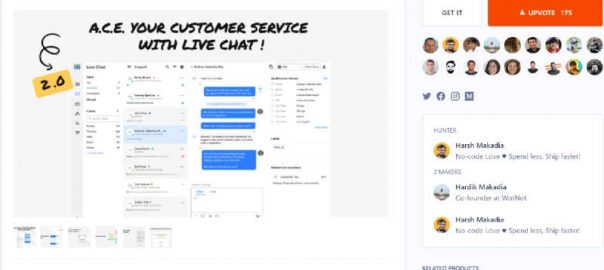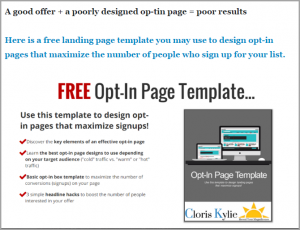Did you know that if a SaaS company grows only at 20% every year, there is a 92% chance it will cease to exist in the coming years? This shows that having marginal growth is not acceptable in SaaS. When it comes to this industry, experts often refer to the term “growth hacking” – A method where SaaS marketers employ creative, low-cost strategies to boost their cloud signups and sales. Considering the high stakes and fierce competition in the SaaS marketplace, growth hacking is probably the only ray of hope for the SaaS industry to grow beyond the dreadful boundary of 20%.
A SaaS industry needs to have a well-planned and executed strategy that can help them push through competition, reach its goals, and become successful.
We bring you the top 10 tried and tested Growth Hacking techniques in the SaaS industry!
#1 – Get listed on Online Directories
It’s not enough to build a product that sells. It takes extra effort to help your product get discovered, and online directories are a great way to start some organic growth. 97% of consumers consider product reviews while making a purchase decision. This shows that online directories aren’t just the digital replacements for Yellow Pages. Their use-case goes beyond the traditional ‘finding the right vendor.’
Below are some of the most popular directories for SaaS companies,
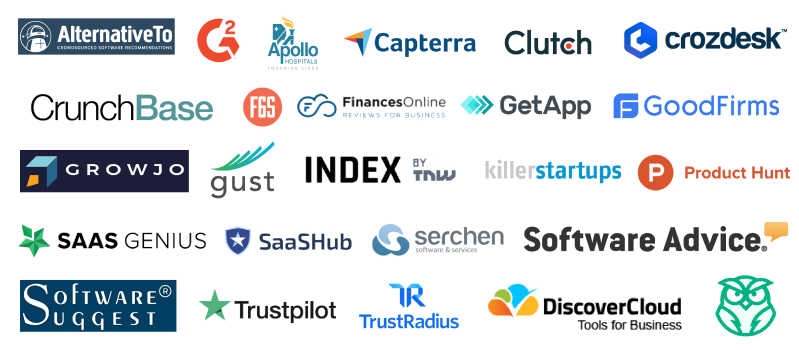
It’s true that industry-specific directories already have relevant traffic, firms that are looking to buy just what you’re selling. But directories are also a place of community reviews that give the much-needed credibility and customer trust that your SaaS company needs.
#2 – CRO Tools
One of the primary reasons for low sales is a leaky sales funnel. This is where CRO tools (Conversion Rate Optimization) pitch in. SaaS companies are in the constant loop of turning visitors into users, leads into PQLs(Product Qualified Leads), and PQLs into paying customers. This means constantly monitoring and revising conversions, engagement, and upselling to keep the growth intact. CRO tools shown below give the much-needed push in between where the process becomes stagnant.
Exit-intent Popups: Many companies think that popups are dead because they tamper with the website experience. The only trick here is to use it after knowing the problem, intention, and solution. If done right, popups can have a conversion rate of 10% to 60%. But they need to be content-specific and behavioural.

Consider the big five parameters: Content, Design, Value, Page location, and Trigger while deploying a popup. Defining these parameters depends on your core message, but there are chances of a high conversion rate if you get these right.
In the above example, we deployed a popup for our Live Chat tool, which was very successful because of its simple sleek design and content. As a result, this exit-intent popup brought in a CTR of ~ 26% and increased our leads by 9%.
Sticky Bars: A sticky bar is a horizontal bar on the website used for increasing conversions. It often has a crisp message with a powerful CTA. Sticky bars are an excellent alternative for companies that don’t want to use popups as they aren’t as intrusive. You may noticed lot of startups using it make announcements or promotions for a webinar, funding round, new feature release etc.
#3 – Chatbots to improve engagement and conversions
75% of your website visitors will leave without giving you any information, and your anonymous visitors will be just that – anonymous. And a big reason why we need to look at this is because you are burning a lot of advertisement dollars into these eyeballs on your website, and it only makes sense to deploy a mechanism that gives better engagement, conversion and ROI.
Enter chatbots!
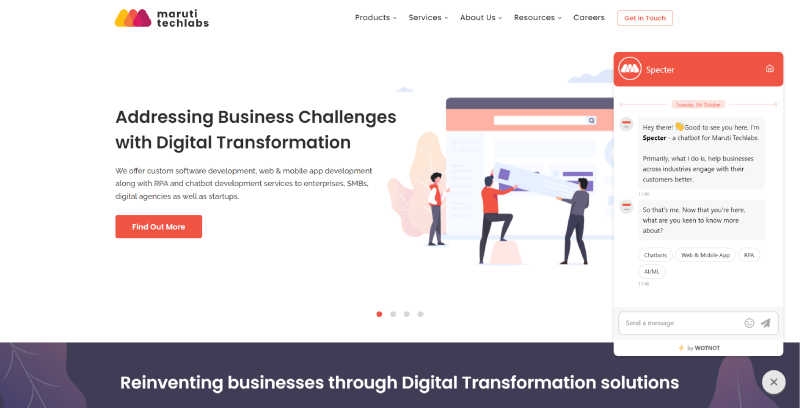
Currently, 58% of the companies using chatbots are b2b companies since bots enhance website conversion rate by 33% in the industry! In a highly saturated market, it’s wise to go beyond conventional marketing strategies. 77% of SaaS marketing professionals think personalization can fuel b2b growth through providing a better customer experience.
Bots considerably increase lead generation and qualification activities on digital platforms through automated conversations and reduced human efforts.
For example, we deployed a bot on our own website to engage with our audience and capture their intent. And furthermore, to make it more contextual, we deployed different bots on our most popular pages like pricing, and features, so that the bot can context-specific conversations with them.
In simple terms, here’s what the bot does,
- Engages with the visitors on our website
- Starts a friendly conversation with them
- Probes them to understand their motive on the website
- Based on the motive, the bot asks qualifying questions
- Looks at the data and decides whether the lead is qualified
- If so, passes the information to our Salesforce CRM
- And suggests the visitor to read some of our signature blog topics
And having it do just this, it has delivered us crazy results as you see in our weekly report below. 350+ leads per week is just awesome!

The reason why chatbots are one of the top growth hacking techniques in the SaaS industry is that chatbots facilitate conversational marketing – a technique that allows real-time engagement on your digital platforms.
#4 – Product Hunt Launch
If you have added a new tool or rolled out a complimentary product, Product Hunt is the go-to place for launching your product. It is a niche community of passionate SaaS founders and product enthusiasts looking for the best new products. A presence there can get you a burst of recognition and do wonders for your brand awareness.
Have you ever been on a stage for a performance as a kid thinking this experience will either make or break you? Think of Product Hunt just that for your SaaS product launch. A successful launch on the platform can land you in the top position and bring a chain of potential subscribers with it. But an unsuccessful launch can do the opposite.
So before launching your product, ask yourself, do you have a well-built product in the tech startup domain? Is your product something that offers value? Do you have an audience for that product? Will the audience pay for your product? Once you’re clear, start promoting the launch of your product to reach the top of the Product Hunt list.
Recently, we launched a significant update of our Live Chat feature on Product Hunt. After meticulous planning for the launch, our product ended at the #1st position on the list with a trophy to display our popularity and by the end of the day, it settled on the #5 position. Not bad, right!
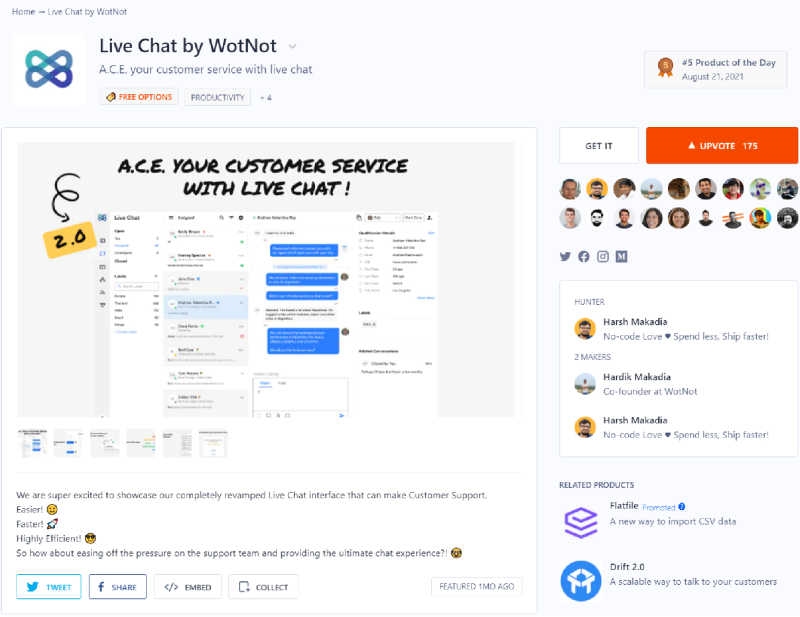
Here’s a list of things we did to get to the top,
- Find/Hire a top hunter.
- Determine the right time to launch (Usually 12 PM IST)
- Let your team know and assure your own upvotes
- Respond to Comments
- Promote within your social circle
- Try getting existing customers to comment
- Leverage your Email List
- Promote launch on your social media
- Look for communities that would be interested in your launch.
Product Hunt can give you a massive boost for the first few weeks of your launch. But you need to understand that this traffic is just a one-time boost. You shouldn’t expect consistent traffic from here after your launch activities. But in the given time frame, you can expect high traffic and put strategies in place to convert that into leads. The biggest plus of this channel is that you find like-minded people who are always on the lookout to find the best and newest tools to solve problems.
#5 – Influencer Reviews
Influencer Reviews aren’t just for b2c. They’re as effective in SaaS and other b2b businesses. Before making a software purchase, any SaaS company would identify vendors, compare the features, and review using review portals. A review by an industry expert and an influential personality would, by default, get more recognition and credibility.
A majority of the population also uses social media and follows influencers on these platforms. So what great way to market your product where your prospects already are? You already have a relevant audience. Probably one of the primary hindrances that businesses have using this strategy is a budget. But that can be worked out.
- First, look for the best influencers in their field and have an established audience that matches your buyer’s persona.
- Start engaging with them on their social media handles. React to their content, comment on their posts, and participate in their live streams.
- When they share your content, always reshare or retweet to acknowledge and appreciate them.
- Once you’ve built a rapport with them, you can offer an incentive to promote your product.
- It doesn’t just have to be monetary but also a lifetime free subscription or a 12-month pass to your product, etc.
- Allow them to try the product and write an honest review to their audience.
Good influencers that have a good reach need constant nurturing and convincing. So don’t just magically expect them to give you a review but talk to them like you actually mean a favour. Relationships are everything in business, and the better relationship you have with influencers, the more helpful they could be to you.
Influencer marketing also needs to be a win-win situation. An influencer needs to benefit from your product/content as much as you can benefit from their audience. Even if you’re spending money, do your research on the reach and authenticity of the influencer to know you’ll get a good ROI.
Originally published here.
Business & Finance Articles on Business 2 Community
(47)
